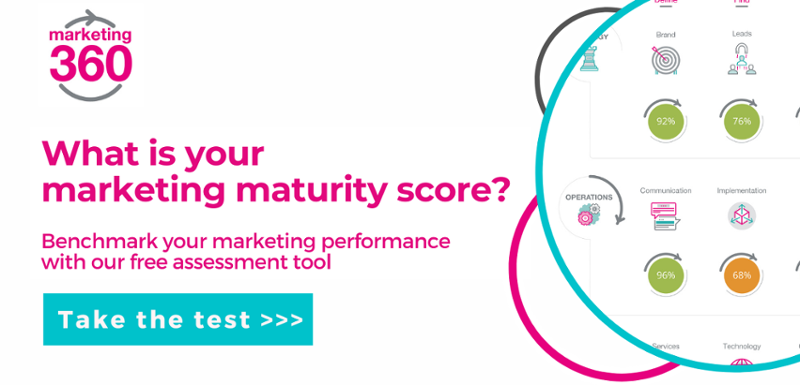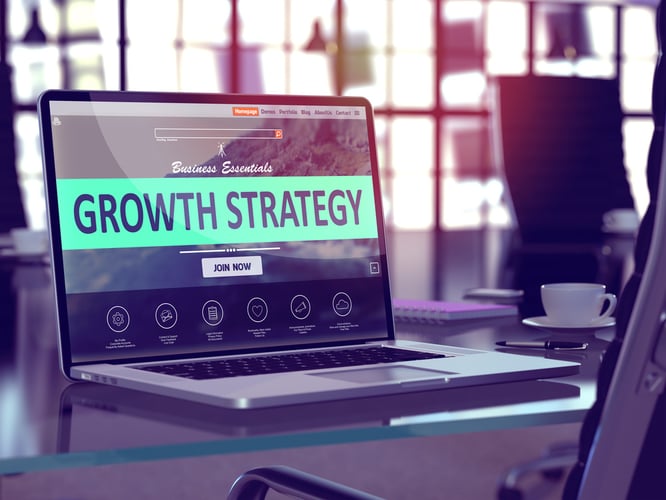Without a goal, it’s impossible to score.
Businesses survive and thrive by offering value; by solving customers’ problems. Too often, that’s the problem, however. When we begin working with them, most businesses don’t understand their customers’ pain points and – even worse – don’t know who their most valuable customers are.
Meanwhile, those with a clear picture of their customers’ needs, concerns and attitudes can find more of their target customers – boosting their sales and empowering their business to survive the marketplace challenges that threaten them and their competitors.
If growth has stagnated in your business, a failure to understand your most important asset – the people buying your products – may be why. Here’s how to identify whether poor customer insight is dragging your business down, how it affects sales, and – most importantly – what to do about it.
What are the business symptoms of poor customer insight?
The following red flags emerge in businesses that fail to understand their customer:
Lack of innovation. No business can stand still and succeed. Evolution and innovation are necessary to stay relevant for customers – but without knowing how customers feel, what they need and which challenges they face, businesses can’t deliver maximum value.
According to a recent McKinsey poll, 84% of executives believe innovation to be integral to business growth – but 94% are disappointed by the standard of innovation within their own business. Lack of customer insight – of knowing where to innovate – is typically to blame.
An inability to characterise and understand customers in detail. The massive volume of marketplace data available to teams means this weakness is confusing. Businesses have customer data, but don’t study it in depth.
It’s not enough to know a target customers’ gender, salary, job title and buying habits, as this doesn’t describe what they are trying to achieve, and therefore how your business can help them. This distinction forms the basis for the ‘Jobs to be done theory’, here.
- You may like: Barriers to growth, and how marketing can help: Culture
Businesses must seek to understand what customers do every day, what their frustrations are at home and work, and how they expect suppliers to support them. Doing so enables businesses to build a more detailed picture of their buyers and pinpoint where they fit in it. Often, business owners assume they know their customers and only realise their lack of knowledge when asked the right questions by an objective outsider.
Unfocused marketing and product development. Marketing and advertising activities and product/service offerings targeted at generic target customers suggest the teams behind them don’t know enough about their audience. Worse, both approaches have much less chance of hitting home than those focused on specific customers and their particular needs.
This isn’t to say that marketing and advertising campaigns shouldn’t be based on the instincts of a business’ marketing team. The most effective advertising campaigns come from moments of high creativity. Effective campaigns will be grounded in marketing research, however. Ineffective campaigns are more likely to rely on gut feel alone.
What happens to businesses without customer insight?
In marketing terms, businesses without developed customer understanding are likely to suffer a higher CPA (Cost Per Acquisition), one of the two key metrics every business should measure. More budget is wasted on campaigns with a low chance of meeting their target.
Left untreated, this disconnect between customer understanding and product/service offering will damage the business’ brand and – in turn – its sales. Customers, whose needs shift continually, will lack confidence that the company meets their requirements. Competitors with deeper customer insight will be better placed to stay ahead and take advantage of the market changes catalysed by customer needs.
At best, these challenges will cause growth to stagnate. At worst, the business will become irrelevant to customers, and wither and die. Blockbuster, Kodak and – most recently – Maplin are prominent examples of businesses that failed to adapt to customer demands, even after research indicated their business models had become redundant.
What’s the solution to poor customer insight?
Thought Clothing – formerly Braintree – offers a powerful illustration of a business recognising and reacting to the limits of their customer insight.
Operating in a fiercely competitive market, the ethical clothes brand worked with our part-time proven Marketing Directors to survey customers’ awareness and perception of the business. The results prompted a radical rebrand – including a redesign, new name and updated messaging – before being used to inform the business’ ongoing marketing strategy.
Over the following six months, Thought Clothing earned widespread industry coverage for their new brand, empowering wholesale customers to better communicate the business’ messaging – in turn boosting brand awareness and loyalty.
What can you do?
First, do something. Most businesses are reluctant to step outside their comfort zone and solve their problems in a new way.
Second, establish what data you already hold on customers. Is this information still valid and valuable? What useful insights can be drawn from it?
Next, define the scope of your research. What additional types of insight would empower your marketing team to understand and empathise with your target customer?
Choose your method. Online surveys and telephone interviews with existing customers are tried and tested. Others choose more creative approaches, like Richard Shotton, Deputy Head of Evidence at Manning Gottlieb OMD. Lacking a research budget when expanding a womenswear brand into menswear, Shotton instead used photography as his basis for customer discovery. Tasked with gauging customer sentiment around the New Look brand, Shotton showed respondents two photos: one of a man holding a Topman bag, and one of the same man holding a New Look bag. He then asked respondents which they found more attractive. The answer? Mr Top Man – a revealing customer insight, generated cost-free.
|
Exercise: Get started Test your assumptions about your clients. List your four best customers and ask yourself the following:
Look for interesting insights in your answers and common trends across your four best customers. |
Teams must approach customer research with an open mind. Rather than continually seeking to confirm their assumptions about their target buyers, the most effective marketers seek to challenge their thinking, including by asking customers if their assumptions are correct.
At all points, teams should focus on developing depth of insight. “After decades of watching great companies fail, we’ve come to the conclusion that the focus on correlation—and on knowing more and more about customers—is taking firms in the wrong direction,” states the Harvard Business Review.
“What [businesses] really need to home in on is the progress that the customer is trying to make in a given circumstance –what the customer hopes to accomplish. This is what we’ve come to call the job to be done.”
Unpicking the latter provides the insight necessary to understand the products and services customers want to buy. The article continues: "The jobs-to-be-done theory can transform our understanding of customer choice in a way that no amount of data ever could, because it gets at the causal driver behind a purchase."
There are two final points to consider when conducting customer research.
First, be wary of buying off-the-shelf reports instead of active research. These are unlikely to offer the specific consumer insight your business requires. Moreover, off-the-shelf reports typically provide quantitative or numerical data (how many, how much, etc.). Qualitative data that answers what and why is more useful when it comes to understanding customers.
Second, be careful when using salespeople to conduct consumer research. Sales professionals typically focus on recent feedback, as opposed to historical insight. They may also be tempted to pitch a product or service during research, instead of seeking to obtain objective customer insight. Get your research right, and there should be plenty of opportunities to do this later.
Outcomes
Customers drive markets. Listening to and accepting their perspective is, therefore, one of the most powerful means of ensuring customer satisfaction and driving business growth.
The history of big-box US retailer Best Buy showcases this power. Threatened with a shifting marketplace, Best Buy conducted extensive analysis of customer reviews of their business, responding directly to shift their marketing strategy. In turn, the company has been able to avoid administration by making critical decisions to cut expenses, match competitor prices and improve their website – all based on customer feedback.
Whether a business is in trouble or simply at an inflection point, customer insight is critical to long-term success and takes just three simple steps:
- Determine who your customers are.
- Use consumer insights to identify outstanding issues.
- Solve these issues with an effective marketing strategy.
Do all three, and your business should begin to achieve the growth you deserve.





